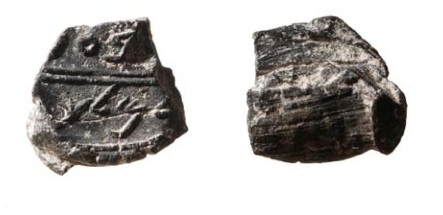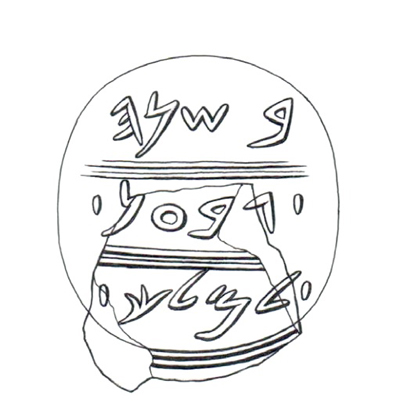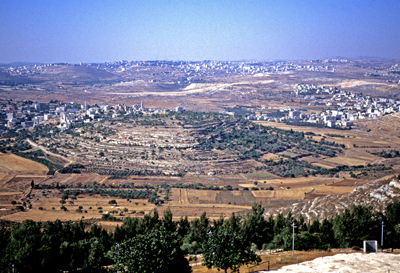A few days ago, the Temple Mount Sifting Project published an article about a fiscal bulla (a lump of clay that bears the imprint of an inscribed seal) that was found in an excavation on the eastern slope of Mount Moriah:
The bulla carries an Ancient Hebrew inscription: “[g]b’n/lmlk“, i.e. “Gibeon, for the King”. The bulla originates from the eastern slope of the Temple Mount, descending into the Kidron Valley. The bulla belongs to a group of bullae which were called by N. Avigad “Fiscal Bullae”. Presently we know more than 50 bullae of this type. They comprise two groups, one with names of cities in the kingdom of Judah, and the other with names of royal officials.


These ‘lmlk’ (for the king) bullae sealed tax commodities sent to the King of Judah and date from the time of King Hezekiah. About 50 of these fiscal bullae are known, but this is the first one that came from an archaeological rescue excavation. Gabriel Barkay has published an extensive article (in Hebrew) in which he discusses the entire phenomenon of the fiscal bullae.
The bullae include names of 19 different cities of Judah, and dates of the reign of one of the Judean kings, usually in hieratic numerals, as well as the particle “lmlk“, “for the king”. The components of the inscriptions are discussed, as well as the geographical history of the bullae, and its comparison to the list of Judean cities in Joshua 15: 20-63. The fiscal bullae represent a taxation system from the different Judean cities, based on yearly taxes, which probably replaced the previous one, reflected in the royal Judean jars and their seal impressions, from the time of King Hezekiah.
Not all of the cities, however, are mentioned in Joshua 15. Two cities belonged to Simeon, Eltolad and Bethul, and Gath was a Philistine city during most of the Biblical period. Here is the list of the 19 cities and where they are mentioned first:
- Eltolad (Josh. 15.30, 19.4; Tolad 1 Chron. 4.29)
- Lachish (Josh. 15.39)
- Nezib (Josh. 15.43)
- Arab (Josh. 15:52)
- Keilah (Josh. 15.44)
- Gebim (Isa. 10.31)
- Maon (Josh. 15.55)
- Jagur (Josh. 15.21)
- Gath (Josh. 11.22)
- Bethul (Josh. 19.4, Chesil Josh. 15.30, Bethuel 1 Chron. 4.30)
- Aphekah (Josh. 15.53)
- Gibeah (Josh. 15.57)
- Adullam (Josh. 15.35)
- Zaanannaim (Zenan Josh. 15.37)
- Socoh (Josh. 15.35)
- Gibeon (Josh. 9.3)
- Zarah (Hazor Josh. 15.25)
- Adoraim (2 Chron. 11.9)
- Ziph (Josh. 15.55) – Judah
These originally were all Canaanite cities that were conquered by Joshua and were still part of the Kingdom of Judah during the reign of King Hezekiah.

Gibeon did belong to a group of four Canaanite cities that made a covenant with Joshua by disguising themselves. After having been found out by Joshua, he made them hewers of wood and drawers of water for the house of God (Joshua 9).

One thought on “Fiscal bulla found in Jerusalem”